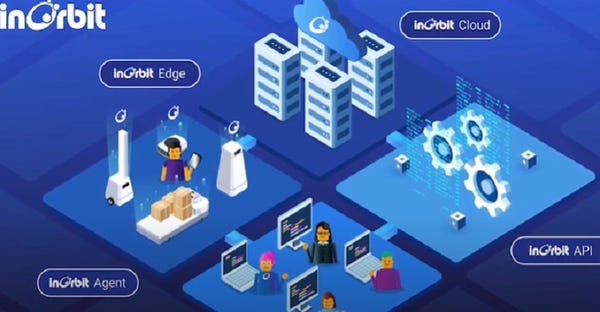Want to Control Your Automation Army? Hop Aboard the Robot Platform
Robot control platforms are helping users as they add more equipment to their automation projects.
October 4, 2021

As robots are increasingly called into action to cover work shortages, the need to control multiple robots is growing. InOrbit, a provider of cloud-based robot operations (RobOps) software, has launched a free edition of their platform. Access to the platform lets companies manage an unlimited number of robots at no cost. Users can sign up at InOrbit’s website.
The goal for using a system to control multiple robots is efficiency. “Our mission is to catalyze the robotic industry. We see a lot of people reinventing the same thing over and over. Creating an original system to run a robot fleet slows people down,” Florian Pestoni, CEO of InOrbit, told Design News. “We’re trying to remove as much friction as possible. We’re not giving away everything. We’re keeping some things for companies with more advanced needs. With the free edition, it’s free forever and it’s unlimited robots.”

InOrbit’s free edition enables access to the end-to-end platform infrastructure, including the robot-agnostic InOrbit Agent, Adaptive Diagnostics, a secure messaging infrastructure, and InOrbit Control, a personalized dashboard. The solution includes observability features such as vital robot analytics, and diagnostics, as well as the ability to track a robot’s position on a map in real-time.
Let the Cloud Watch of the Robots
The free edition is designed to enable robotics companies to focus their development efforts on their specialized robots rather than spending engineering time with cloud infrastructure, data collection, analytics, and incident management. “With InOrbit’s free edition, we are helping companies address common robot operations problems without having to worry about having to enter a credit card,” said Pestoni. And unlike other limited time trials, Free Edition supports an unlimited number of robots for free – forever.”
Users can decide what features to activate as they set up their free accounts. Not every user, for instance, will need to activate the analytics capabilities. “The way it works is we have different capabilities. You can pick and choose. Not every customer will need everything we offer,” said Pestoni. “You can turn on the things you need and not use the parts you don't need.”
The basics of the free version include data sharing from the cloud to the robots. “There’s a lot in the free edition. It includes our infrastructure for communication between the robot and the cloud – secured – diagnostics. Understanding the robot, smart monitoring. The ability to configure what you need,” said Pestoni. “It includes the basic functionality of fleet management and incident management. It includes the ability to see your robot on a map and through the cameras. We support one camera per robot in the free edition.”
Robots Are Showing Up Everywhere
In recent years, robot applications have moved beyond their traditional roles in manufacturing and warehousing. “We work with companies in logistics, agriculture, hospitals, and retail. What I find exciting is there are more and more robot companies in all sorts of industries,” said Pestoni. “We’re seeing a lot of traction is in logistics.”
The year 2021 has been a robust time for robot acquisition for several reasons. “The process of moving to automation started long before COVID-19. Companies are now limited by the availability of labor,” said Pestoni. “The limiting factor is the shortage of labor. The Delta variant is exacerbating the problem.”
For any ecommerce company competing with Amazon, fast turnaround has become critical. That necessary speed requires automation. “We’re coming up at the end of the year for ecommerce companies, and even non-ecommerce companies,” said Pestoni. “Companies in ecommerce are under increasing demand for higher levels of profitability. With two-day shipping, the demand is high while the available labor is limited. Automation can help.”
About the Author(s)
You May Also Like





